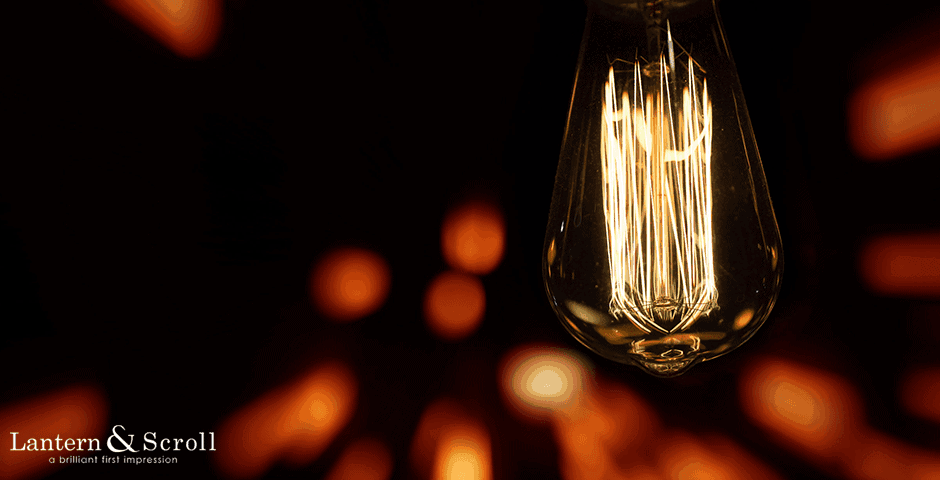Long before the dawn of gas and electric lighting, copper was the material of choice to light the night inside and out. While its usage has fluctuated over the years, it retains a bright spot in American lighting history.
Overcoming The Dimness Of Colonial Times
As historians have pointed out, early America was not a well-lit place. Prior to the widespread adoption of street lighting in U.S. cities, lighting was often provided by candle-powered lanterns that people hung in their homes or outside the door. The material for these lanterns was cheap tin or sheet iron, which is why remaining examples of early lighting fixtures in the U.S. are rare. Light manufacturers who have researched styles of the day or discovered old remaining copper lanterns have produced versions of what interior and exterior fixtures might have been like. The materials used for the reproductions are usually brass or copper.
In the absence of permanent fixtures, householders carried lanterns around with them at night to illuminate their way. Using lanterns was considered safer than carrying candles into barns, stables, and other places where an open flame might be dangerous.
Popularity Of Copper For Coastal Lighting
Even if many early Americans could not afford copper, it was considered the ideal material because it was not only beautiful but durable and strong too. Unlike cheap materials that deteriorated in extreme weather conditions, copper held up without requiring extensive maintenance. Exposure to weather added a patina to copper that that protects it while making it more beautiful.
The anti-corrosive property of copper made it a natural choice for marine applications, both for maritime lighting and lighting in coastal locations. Salt water is brutal when it comes in contact with most metals, but copper can withstand the constant onslaught. For this reason, copper lighting became popular in Charleston and other coastal cities, especially in the South. Many fixtures offered by Lantern & Scroll and other companies specializing in reproduction lighting look to the streets of these cities for historic examples of coastal lighting upon which to base their modern offerings.
The Development Of Street Lighting
The properties of copper made it a popular material for street lighting as the science developed. Street lights were first introduced to Philadelphia by Benjamin Franklin. This birthplace of street lighting in the U.S. used candles encased in a 4-paned glass vessel to protect the flame from being extinguished by wind. To keep the flames lit, lamplighters renewed the candles and later other fuels and often played the role of town watchman. The copper frames were later powered with beeswax or with oils obtained from olives, fish, whales, nuts, or sesame until the late 18th century.
When gas lighting was developed in Britain by William Murdoch in 1792, the usage of gas fuels in copper lanterns spread to the United States. Gas lighting first came to Newport, Rhode Island in 1803 and spread to other cities such as Baltimore and Boston that began to use coal gas lamps as replacement for oil. Gas lighting, which was tested in a few homes, proved to be very efficient as it offered 12 times as much light as a lamp fueled by oil or candles for 75% less cost.
After experiments with many types of gas, illuminating gas was developed by mixing hydrogen with hydro carbon gases distilled from bituminous coal or peat. The bright light produced by this fuel enabled a longer work day, while making the streets safer at night and even encouraging more reading. Illuminating gas was also used in the theater. It was the most popular fuel for lighting until the gas mantle was invented in 1891 which surrounded the flame with a ring of metallic oxide cloth that increased brightness.
The Rise Of Electric Street Lighting
Once Thomas Edison pioneered the electric light, street lighting technology was a beneficiary. Rather than gas, the new system used direct current that light the bulbs. This system required the establishment of low voltage power plants every mile or so, which made the system expensive though safer. Developments of alternating current systems that used high transmission line voltages and transformers by companies such as Westinghouse Electric and Thomson-Houston in the U.S. decreased the cost and made this type of lighting economically feasible for homes.
The first street lights were tested in Wabash, Indiana by Charles Brush of Cleveland, Ohio in 1880. As the “First Electrically Lighted City in the World” Wabash was the only the first of many cities who moved toward this safer method of lighting streets and homes.
As electric street lights increased in popularity, new materials such as steel and aluminum became popular for housings. However, copper wiring is still commonly used in the bases of poles. Over the last few years, light poles have been the target of thieves who still the copper from the poles which damages them.
The Resurgence Of Copper in Exterior Lighting
Even though the use of copper for some types of exterior housings has changed, it remains popular for specialized uses such as when authentically restoring old homes, upgrading exterior fixtures for increased curb appeal, or gentrifying cities. Even for interior use, its rich color and unmistakable quality have made it a go-to metal in the last few years.
The hand-wrought collections offered by Lantern & Scroll harken back to the brilliant history of copper lighting while adding a modern take on design. Regardless of whether you have a period home or one that is more modern, our copper exterior fixtures are worth consideration when upgrading the lighting in your home or commercial building.

